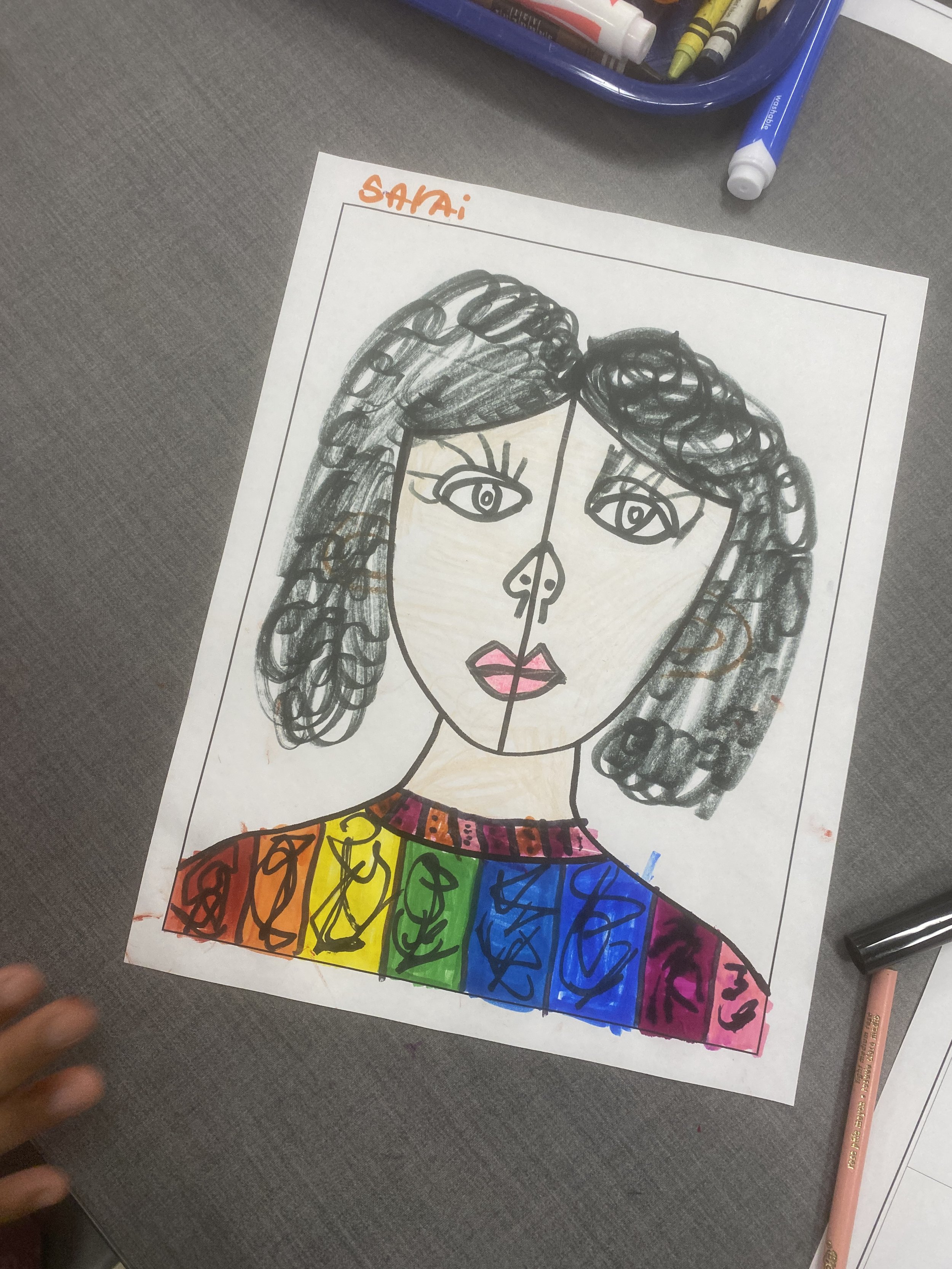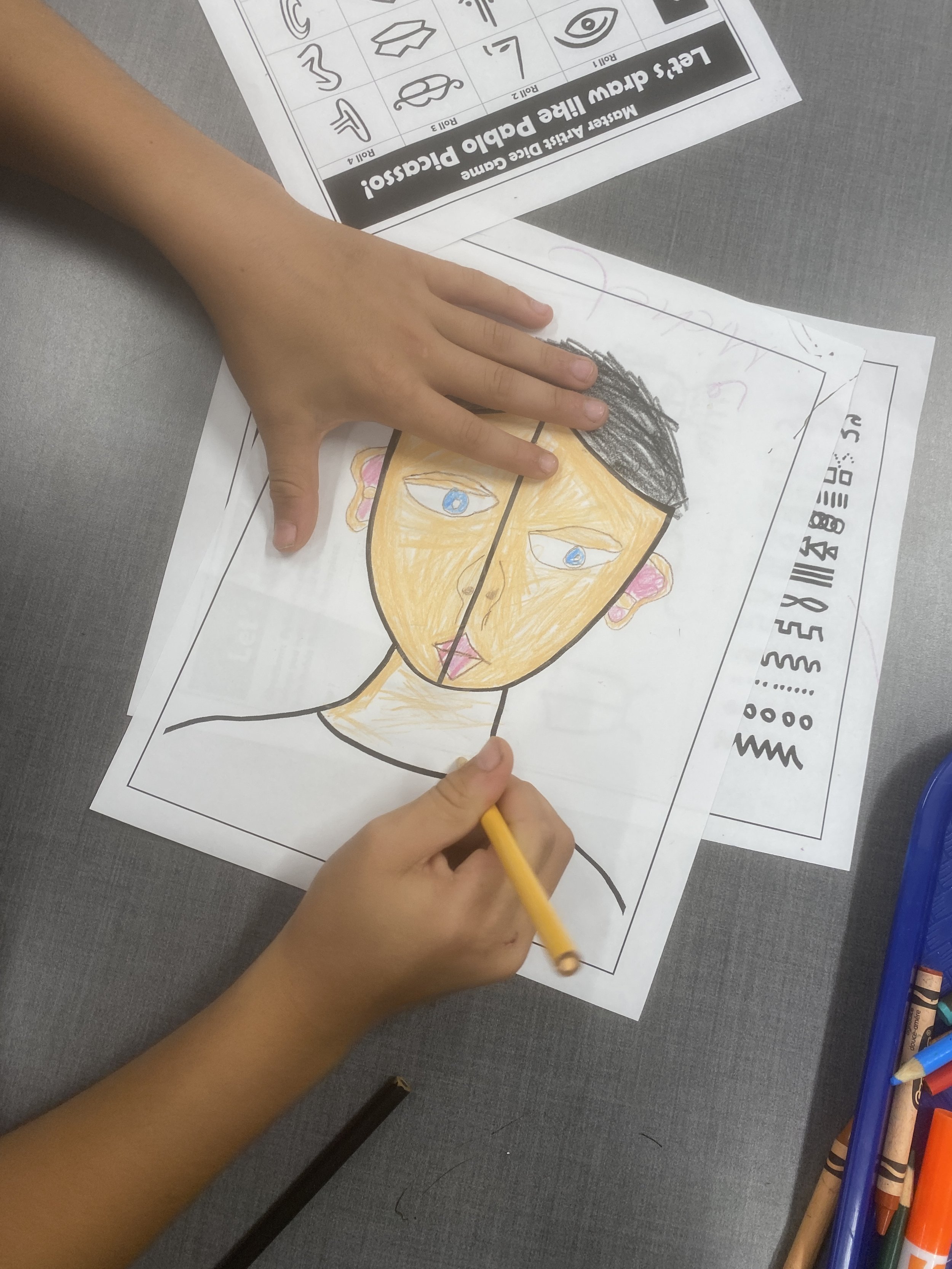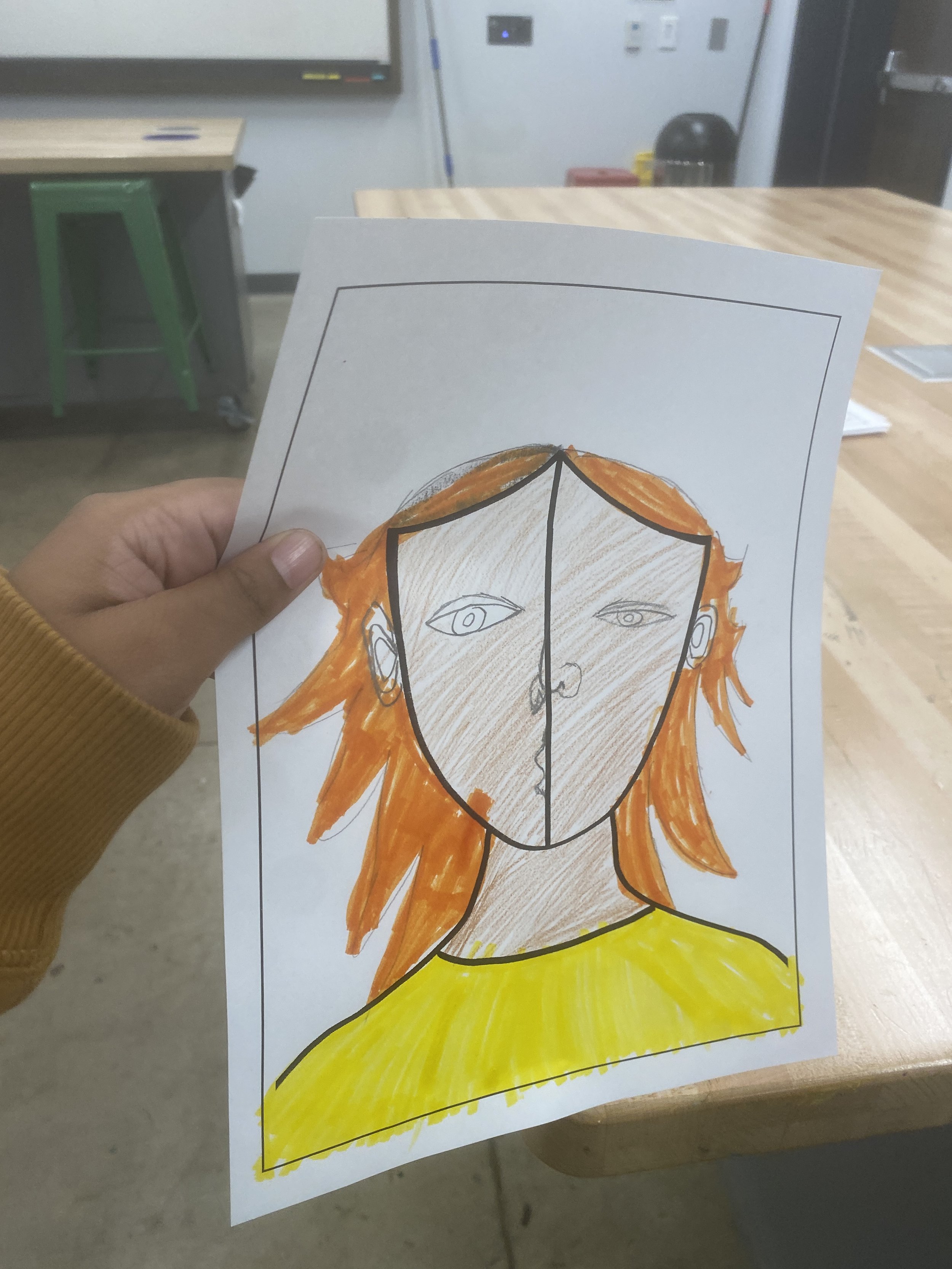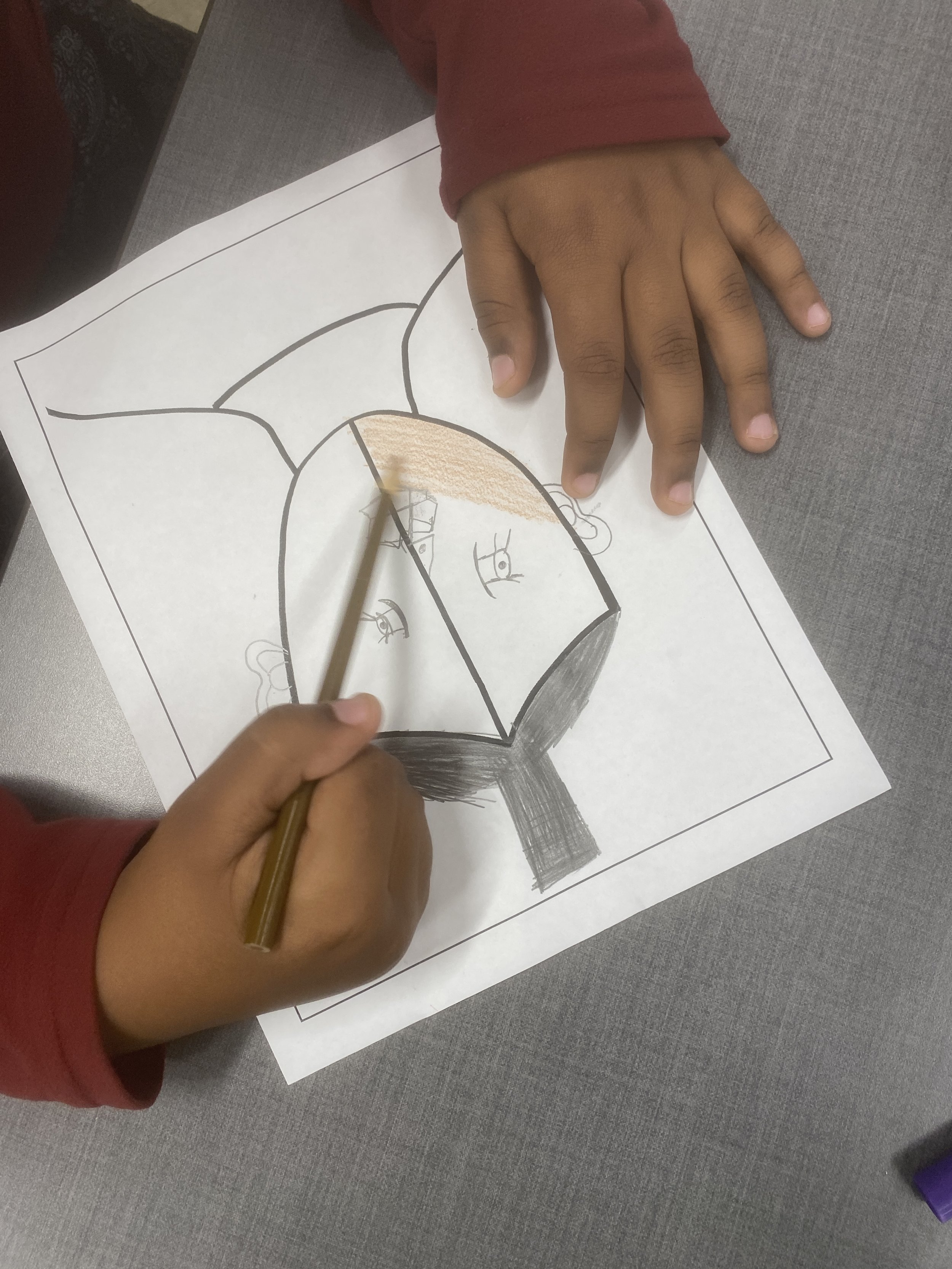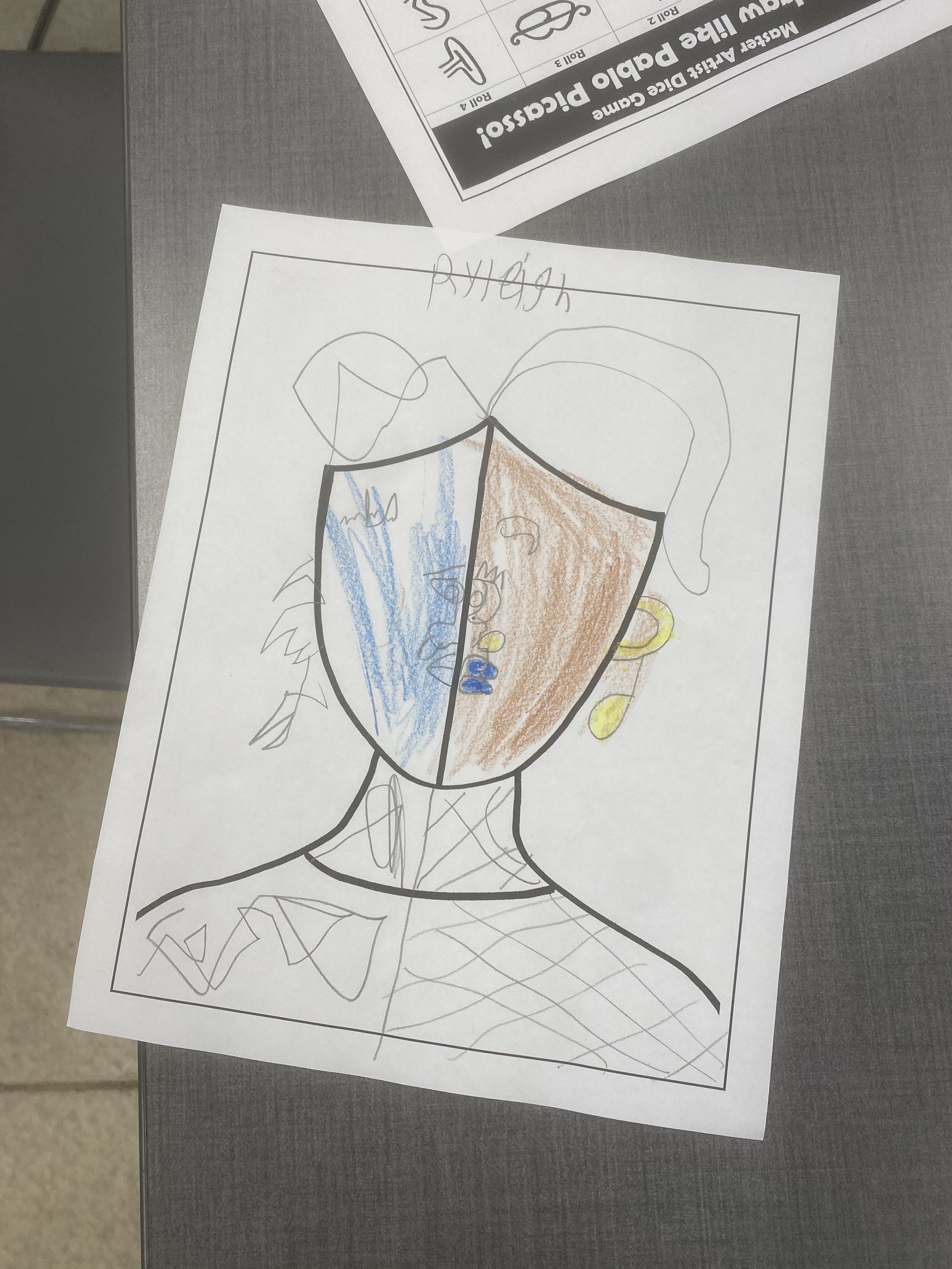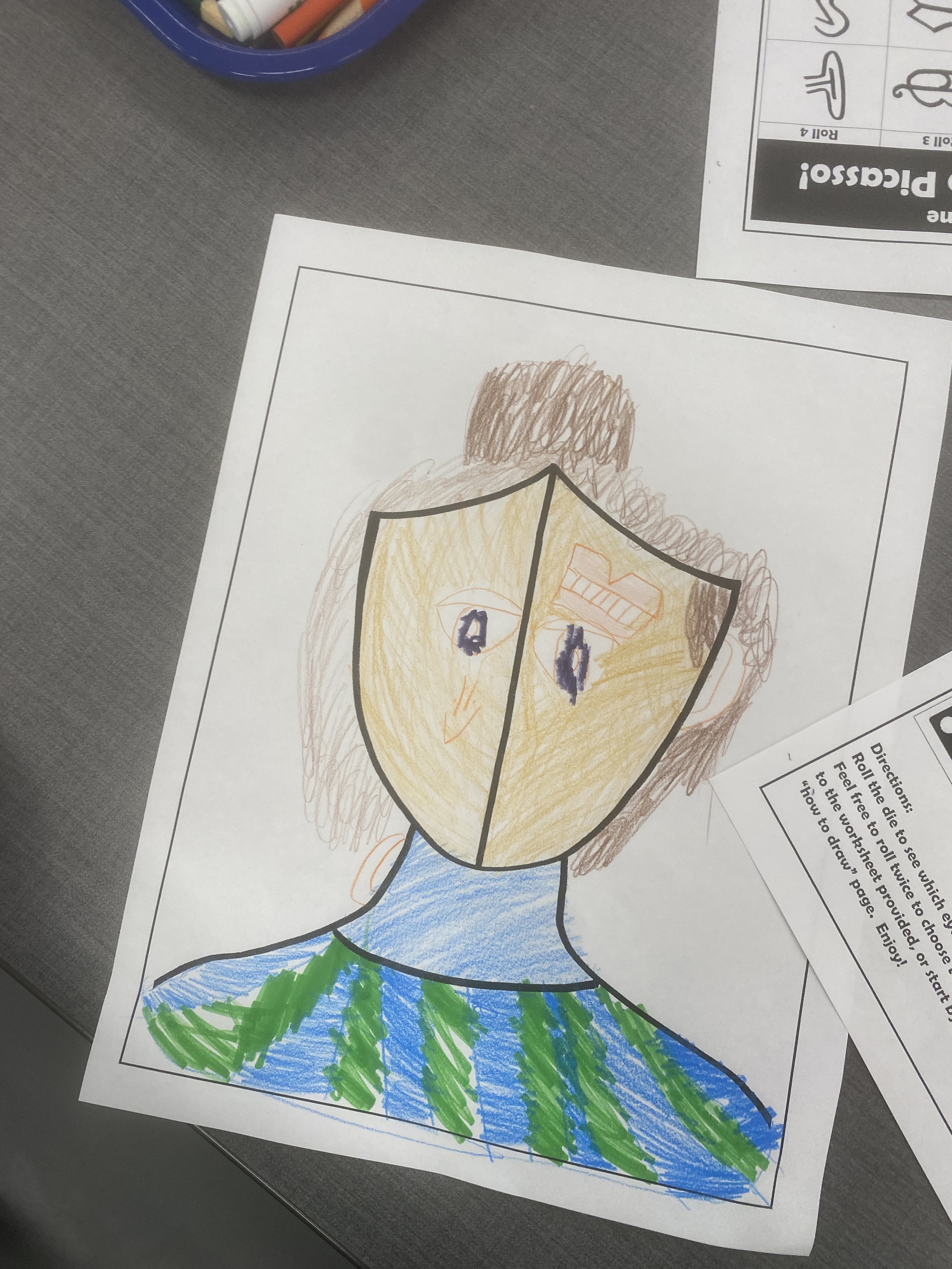Let’s Learn About Artist:
PABLO PICASSO
Students will explore the revolutionary artistry of Pablo Picasso, gaining insights into Cubism and unconventional expression, and apply these elements in their own creations inspired by his unique approach to art.
Materials
Makers or Colored Pencils
Pencils
Dice
Let’s draw like Pablo Picasso! printout from Metropolitan Library System.
Lesson Outline
Introduction (10minutes):
1. Briefly introduce Pablo Picasso and his significance in the art world.
2. Highlight Picasso's role as a pioneer of Cubism and his ability to express emotions and ideas in unconventional ways.
3. Emphasize the use of geometric shapes, distorted forms, and multiple perspectives in Cubist artworks.
Biography and Artistic Journey (10 minutes):
1. Provide a concise overview of Picasso's life, including his early years, Blue and Rose periods, African art influence, and later works.
2. Discuss his collaborations, impact on modern art, and the evolution of his style over time.
3. Encourage students to ask questions and express their initial thoughts on Picasso's art.
Hands-On Activity (20 minutes): Let’s draw like Pablo Picasso! : Roll-a-dice Game
1. Students roll a dice, incorporating the assigned element into their artwork based on the number rolled.
2. Students begin drawing based on the elements assigned by the dice rolls.
3. Encourage them to experiment with composition, layering, and abstract representations, mirroring Picasso's Cubist techniques.
4. Remind students that the aim is to embrace the unpredictability of the dice rolls and let creativity flow.
Sharing and Appreciation (10 minutes):
1. Encourage sharing within small groups or pairs, discussing the unique interpretations and elements in each artwork.
2. Emphasize the beauty of embracing randomness and experimenting with unconventional artistic approaches.
Assessment:
This Roll-a-Dice Picasso Cubism Drawing Game aims to make the learning experience enjoyable while encouraging participants to explore the essence of Cubism and Picasso's innovative spirit in a playful and interactive way. This lesson aims to not only introduce students to the world of Picasso but also inspire them to experiment with unconventional artistic approaches in their own work. Interestingly, many students tend to avoid asymmetry and create a "pretty" drawing. So, I told the children that despite not being perfect or conventionally pretty, there is beauty in it, and it's important to learn how to see and appreciate that beauty.
*Resources:
Printout: Let’s draw like Pablo Picasso! from Metropolitan Library System
(https://www.metrolibrary.org/sites/default/files/2020-08/PicassoDiceGame.pdf)
Artworks: Art Institute of Chicago
(https://www.artic.edu/artists/36198/pablo-picasso)
Students’ Work



